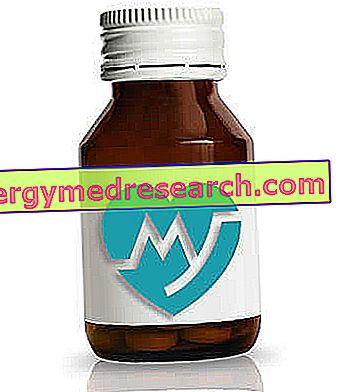What it is and how it manifests itself
Alcohol addiction is part of the group of so-called alcohol-related disorders, which includes all those problems, not only medical, but also family, work and social, which can affect those who use alcoholic beverages.
Alcohol abuse
Alcohol abuse is an intermediate situation between occasional drinking and physical dependence on ethanol; in this phase, the subject - while not presenting a real physical dependence - suffers from repeated interpersonal, work and social problems deriving from the excessive consumption of alcoholic beverages. In these cases, alcohol dependence is purely psychological; thus, the subject sticks to the bottle to feel more fit, euphoric, relieved from the problems that afflict him, abandoning himself to occasional excesses or a continuous consumption of alcohol despite the problems it involves.
Alcohol dependence
In alcohol dependence the patient has now developed tolerance to the consumption of alcoholic beverages and his relationship with alcohol is experienced as an almost inseparable link, otherwise the physical symptoms of abstinence appear. Tolerance, or the decrease of the intoxicating effect of alcohol at the usual doses, determines the need to increase the quantity of alcohol consumed, reaching doses that in the normal subject would involve serious functional alterations.
When physical dependence on alcohol takes over, the subject spends a great deal of time getting the substance; the final balance is a serious compromise of social life, up to dangerous situations for oneself and for others, together with the various medical-legal problems that ensue.
Alcohol dependence according to DSM IV
The DSM-IV defines alcohol dependence as a pathological mode of use of the substance, which leads to impairment or clinically significant distress, as manifested by three (or more) of the following conditions, which occur at any time during the same 12-month period :
- Tolerance, defined as:
- The need for considerably higher doses of the substance to achieve intoxication or the desired effect.
- An effect significantly diminished with the continuous use of the same amount of substance.
- Abstinence, defined as:
- The characteristic alcohol withdrawal syndrome *
- The same substance (or a closely related one) is taken to mitigate or avoid withdrawal symptoms.
- The substance is often taken in larger quantities or for longer periods than the subject expects.
- Persistent desire or unsuccessful attempts to reduce or control the use of the substance.
- A great deal of time is spent on activities necessary to procure the substance, to assume it, or to recover from its effects.
- Interruption or reduction of important social, work, recreational activities due to the use of the substance.
- Continuous use of the substance despite the awareness of having a persistent or recurrent problem, of a physical or psychological nature, probably caused or exacerbated by the substance (for example the subject continues to drink despite the recognition of the worsening of an ulcer due to the intake of alcohol).
Alcoholic Abstinence Syndrome
* Please note: alcohol withdrawal syndrome is characterized by a range of opposite symptoms with respect to the acute effects of the substance; these symptoms, of varying severity, can affect the patient in various ways: tachycardia, sweating, fever, tremor, restlessness, agitation, irritability, poor concentration, poor memory, vomiting, diarrhea, weakness, cramps and nightmares, up to hallucinations, thoughts paranoid, space-time disorientation and delirium tremens in severe cases. According to the American psychiatric Association, alcohol withdrawal symptoms comprise two or more of the following symptoms:
- Hyperactivity of the autonomic nervous system (accelerated heart rate, high blood pressure, accelerated respiration rate, increased body temperature, sweating);
- Anxiety;
- Insomnia
- Pscicomotor agitation
- Nausea and vomit
- Tremor
- Rarely: transient hallucinations or visual, tactile or auditory illusions
- Rarely: epileptic seizures
Alcohol withdrawal symptoms can occur within 4-8 hours from the time the drinker stops taking alcohol, with the peak of maximum intensity on the second day and an improvement by the fifth, although the lighter symptoms disappear only after a few months.
How to recognize it?
- Give the patient specific questionnaires, such as the AUDIT ( Alcohol Use Disorders Identification Test ) which can be done online with immediate response. Unfortunately these questionnaires have the big limitation of being self-compiled, therefore not always responding to the real situation of the patient (the person with alcohol-related problems hardly admits to having a real pathological problem).
- Pay attention to early signs and symptoms: morning vomiting, abdominal pain, diarrhea, gastritis, alcoholic fatty liver disease.
- Perform specific laboratory tests; in the alcoholic the levels of GGT increase and to a lesser extent of other transaminases, the average globular volume (MCV) increases and the concentrations of carbohydrate-deficient transferrin (CDT) are raised.
- Search for objective signs of alcohol dependence on the social life of the individual: frequent outbursts of anger, loss of the ability to communicate with friends and family (social isolation), irritability, inability to complete projects, delays and absences in the workplace.



